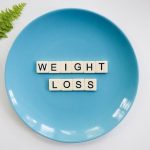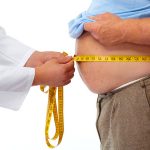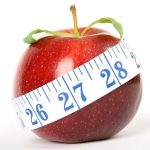
In all seriousness the South Beach diet is a popular hit with many claiming it to be a bit of a fad. It was developed by the cardiologist Arthur Agatson and promoted by him in a best selling book of 2003. The book is known as “The South Beach Diet: The Delicious, Doctor-Designed, Foolproof Plan for Fast and Healthy Weight Loss.”
The diet was developed for the USA market especially those suffering with cardiovascular issues. It is best described as a low-carbohydrate diet. It’s objectives and plan of action are global though, especially catering for Western dietary values.
It certainly has legs and has retained its popularity irrespective of its ‘fad’ status. It became extremely popular in the early 2000’s and was named after Miami’s South Beach where his practice was based. The web-site is generally highly supportive with plenty of information on there for the discerning.
The diet is based on eating foods with a low glycemic index. It categorizes carbohydrates and fats as good or bad. There is no real clinical research out there to specifically support it although many dieticians think it has some basis in truth.
Phasing With The South Beach Diet
Phase 1
The diet works on three stages (phases). No calorie counting and no limits on portions. Three meals and 2 snacks every day is encouraged along with an exercise plan to follow.
Phase 1 is designed for those looking to lose 10 pounds in weight quickly. This is a fortnight rapid weight loss regime. Only lean protein such as fish, meat and poultry is eaten as well as low GI vegetables (mostly ones with high fibre), low fat diary and various healthy unsaturated fats. All carbohydrates are cut out which seems extreme.
A typical Phase 1 food list includes:-
- fish, chicken, lean ground beef, bison, turkey
- nuts and avocados
- broccoli, leafy greens, carrots, parsnips, cabbage
- low fat milk, Greek yogurt, cottage cheese
No fruit is allowed in this phase !
More low-GI or healthy carbohydrates are introduced in phases 2 and 3. The basis for the two later phases is motivational and designed to promote a less severe drop in weight and make it sustainable. Both phases are kept to until the weight goal is achieved.
Phase 2
Typical phase 2 foods include:-
- start eating fruits
- whole-grain bread, rice and pasta
- sweet potatoes
Phase 3 is concerned with weight maintenance. There is no food list to follow. The dieter can make healthy choices. If they get off track with weight they return to phase 1 and 2.
Ideally phase 1 is the most difficult to follow because of the severe restrictions on food intake. At least there is rapid weight loss in the beginning which for some is inspirational. The food list at this point is restrictive but at least it tells you what can be eaten and obviously what is not. It is relatively low maintenance. If the weight-loss is achieved then the likelihood of disease is reduced.
Many start on phase 2 which means it is similar to other low-GI diets. The latter phases are all about healthy eating. Again its all about eating fruit and vegetables. No major food groups are denied after phase 1.
One of the issues is phase 1 which is dietary restricted. A lot of fibre is missing and there is a severe electrolyte imbalance. Phase 1 does encourage ketosis. The breath may smell along with dizziness, lack of energy, insomnia, nausea and constipation. Another issue is that with all diets that are highly restrictive, to eat healthily is not cheap. It is also tricky to keep eating in moderation.
The claims for weight loss appear extreme because 13 pounds in weight should be lost in 2 weeks which is nearly a stone. It’s likely that water and carbohydrate is burnt off in that period. It must be borne in mind though that it was designed for cardiac patients who needed to lose weight rapidly for all sorts of other health reasons. There is little accountability or any support within the diet program. One other issue is how to manage food allergies.
The benefits are that it encourages healthy eating and could be a diet to suit those looking for a rapid weight loss before embarking on a good diet simply to feel like it is actually working. There are many other diets with a similar approach and we would also recommend checking these: Dukan Diet, Keto Diet, LighterLife Diet or even the SlimFast diet etc.
If you want to know more about the diet then visit their web-site. The Wikipedia page may be most appropriate for those unable to access the web-site directly because of GPDR regulations.



Great diet😂